Dr. Bellone‘s research interests involve investigating traits in the horse that are economically and medically important and are useful models for other species, including humans.
Most of her research focuses on the genetics of ocular disorders, pigmentation, and the connection between the two.
She has long been passionate about studying the genetics of Appaloosa spotting patterns. Her research team discovered the mutation that causes these spotting patterns (known as the LP mutation for leopard complex spotting). Horses with two copies (homozygous) for this mutation have an ocular condition known as Congenital Stationary Night Blindness (CSNB) in which they are unable to see in low-light conditions.
Dr. Bellone’s team also discovered that a second gene modifies the size of the white patterned area. This gene is known as PATN1, for first pattern modifier. Horses with both LP and PATN1 will have larger patterns of white than horses with just LP. Genetic testing for LP (and thus CSNB) as well as PATN1 are offered at the UC Davis Veterinary Genetics Laboratory (VGL). For more on the genetics of Appaloosa spotting patterns, visit the Appaloosa Project. Currently the team is investigating other genes that contribute to variation in the size of white patterning as well as other ocular conditions, including Equine Recurrent Uveitis (ERU) in the Appaloosa and related breeds.
Her research efforts have identified the mutations that cause several other pigmentation traits in horses and her team recently identified the first known genetic risk factor for ocular squamous cell carcinoma in horses.

Projects | People | Publications
PROJECTS
Dr. Bellone’s research team, which involves collaboration with other scientists at UC Davis and around the globe, is investigating the genetics of several pigmentation phenotypes and ocular disorders across horse breeds, as well as contributing to efforts to better understand the functional elements of the horse genome. She and her team are also investigating genetic diversity and health traits, specifically in the Standardbred horse.
The primary goal of this research program is to develop tools that will assist animal breeders, owners, and clinicians with informed mating and management decisions by understanding the biological mechanisms behind several complex heritable traits.
Join a Study
Leopard Complex Spotting
Leopard complex spotting is characterized by white depigmentation patterns observed in several breeds of horses. Akin to human generalized vitiligo, these spotting patterns in the horse are bilateral and symmetrical and are characterized by the progressive loss of pigment as the horse ages. Ocular diseases have been associated with both vitiligo in humans and leopard complex spotting in horses and include congenital stationary night blindness and uveitis. This project aims to further define the genes involved in the variability of white patterning. Studying the naturally occurring model of vitiligo should unravel the biochemical mechanisms explaining both melanocyte loss and ocular issues.
Coat Color Dilution and White Spotting Patterns
Several other projects investigating different coat color phenotypes in horses and donkeys are currently being conducted in the laboratory. The aim is to identify novel variants involved in pigmentation for traits of interest to breeders, including liver chestnut, calico spotting, rabicano, and other white spotting patterns not explained by known mutations. In recent years, her team identified two variants that cause a distinctive iris color in Puerto Rican Paso Fino, known as Tiger Eye, the dilution mutation causing the mushroom coat color in Shetland ponies, and a de novo novel variant causing Splash White 6 in Paint Horses.
Ocular Squamous Cell Carcinoma
Squamous Cell Carcinoma (SCC) is the most common tumor of the equine eye and the second most common cancer to affect the horse. Several breeds have a high occurrence of this cancer and Haflingers are among those breeds that are over-represented. The Bellone research team identified a recessive genetic risk variant in a protein known to repair ultraviolet radiation, damage specific DNA binding protein 2 (DDB2). Subsequently, functional evidence determined that the risk variant coded for a mutated protein that cannot bind DNA. Thus, damage to DNA from the sun cannot be repaired, and the accumulation of DNA damage is thought to lead to cancer.
Horses with two copies of this variant are at greater risk of developing ocular squamous cell carcinoma than those with one or no copies. The VGL offers a test for this risk factor. Subsequent research determined that this variant is also a risk factor in Belgian Horses. research team also identified a Rocky Mountain horse, two Connemara ponies, and a Holstein-Belgian Warmblood cross affected with ocular SCC that were homozygous for this variant. DNA testing is also recommended for these breeds.
Currently, the team is working to identify other genetic risk variants for SCC in the Haflinger and other breeds.
Equine Recurrent Uveitis
Equine Recurrent Uveitis (ERU), also known as moon blindness, is characterized by episodes of inflammation of the middle layer of the eye. This inflammation results in intraocular changes and can lead to the development of cataracts, glaucoma, and eventually complete loss of vision. ERU is the most common cause of blindness in horses. The Appaloosa and related breeds are commonly affected by a particular form of ERU, known as insidious uveitis, and the focus of this project is to determine the inherited risk factors in these breeds. We are also working to identify the genetic components of ERU in other breeds, including Icelandic horses and warmbloods.
Bilateral Corneal Stroma Loss
Bilateral corneal stromal loss (BCSL), a corneal disorder that affects Friesian horses, is characterized by bilaterally symmetrical regions of corneal stromal loss that are not typically associated with inflammation or trauma. If left untreated, the cornea can perforate and cause permanent damage leaving vision compromised. Bilateral disorders occurring in a single breed are often inherited. This condition has been reported in Friesian horses. Thus, investigating the genetics of this disorder in the Frisian horse may inform clinical management and breeding decisions.
Distichiasis
Distichiasis is a condition where eyelashes grow abnormally from the inner margins of the eyelid. These aberrant lashes can cause corneal ulcers and result in vision loss. While rare in horses, the Friesian breed has a breed predilection for this disease supporting a genetic basis. The Bellone laboratory identified a 16-kilobase deletion of DNA from a region on horse chromosome 13 that was strongly associated with disease (Hisey et al., 2020). The VGL now offers a test for this DNA variant. Currently, the team is working to better understand the functional consequences of this large deletion.
Congenital Stationary Night Blindness and performance
Congenital Stationary Night Blindness (CSNB) is an inherited condition defined by the inability to see in low light conditions. In addition to discovering the variant that causes CSNB in Appaloosa and related breeds, the Bellone research group, in collaboration with Dr. Brian Gilger at NC State, recently identified the second cause of CSNB in a Tennessee Walking Horse (called CSNB2). Current research is working to determine the prevalence of CSNB2 in other closely related breeds while also investigating if homozygous CSNB2 individuals have different performance metrics as compared to unaffected individuals, especially in animals that compete at night. .
Genetic diversity and health traits in the Standardbred horse
Genetic diversity defines the variation that exists in a population. Due to the limited entry of new alleles into a population, breeding schemes with closed studbooks are expected to cause a decline in genetic diversity over time. Reducing genetic diversity in a population can increase the frequency of genetic disorders. Therefore, monitoring trends in genetic diversity over time and developing selection tools to assist in maintaining diversity is becoming increasingly important to animal breeders. With support from the United States Trotting Association (USTA), the equine research group investigated genetic diversity within the American Standardbred population in the five years immediately following the study book cap (Esdaile et al., 2022). The metrics observed are now being compared to additional time points to evaluate trends in diversity across three decades and make breeding recommendations.
Since genetic diversity is also tied to health, the equine research group is investigating several inherited health traits in the breed, and in partnership with the USTA, we have developed a preemptive program to study foals with potential congenital defects.
TEAM

Dr. Bellone is equally passionate about training both graduate and undergraduate students.
Current Team Members
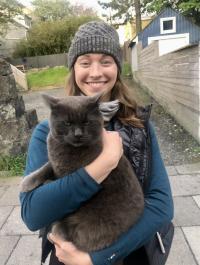
Julia Hoff graduated from UC Berkeley with a dual bachelor’s degree in Integrative Biology and Molecular and Cell Biology in 2024. Currently, she is the Lab Manager of the Bellone research group and is particularly interested in using her bioinformatics skills to identify genetic variants that contribute to disorders and traits of interest in animals.
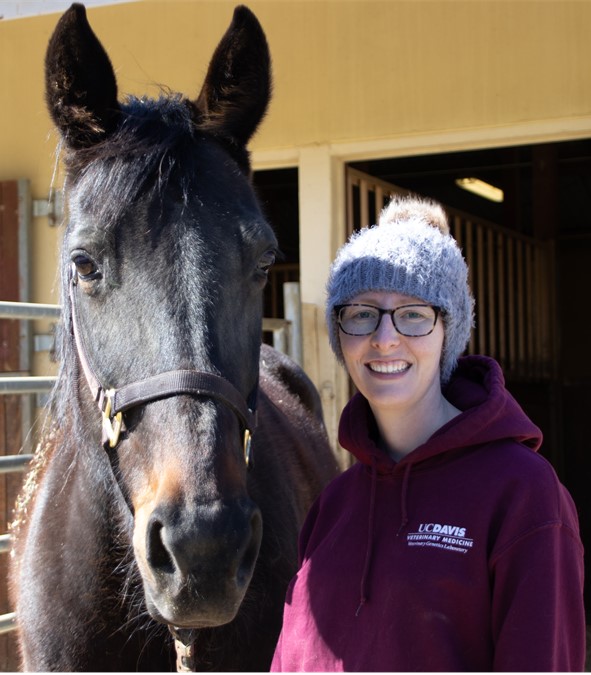
Elizabeth Esdaile completed a masters in the Animal Biology Graduate group under the mentorship of Dr. Bellone and Dr. Avila. Her master's thesis focused on studying the genetics of several coat color traits in horses and genetic diversity in the Standardbred (Esdaile et al., 2021a). Currently, she is the research coordinator for the VGL and lab manager of the Bellone research group. Her work contributes to many of the projects in the lab, and her most recent work identified the W13 allele in Shetland ponies and Miniature horses (Esdaile et al., 2021b).
 Dr. Nicole Kingsley obtained her Ph.D. in Integrative Genetics and Genomics Graduate group in 2022 and is currently a veterinary student at UC Davis. Her work contributed to the Functional Annotation of Animal Genomes project (FAANG) by analyzing the Chromatin Immuno-Precipitation Sequence (ChIP-seq) data (Kingsley et al., 2019, Kingsley et al., 2021). This project aims to improve the annotations for the genomes of several important agricultural species, including the horse. She is researching the genetic underpinning of Equine Recurrent Uveitis (ERU) in Appaloosas and other breeds (Sandmeyer et al., 2020; Kingsley et al., 2022a; Kingsley et al., 2022b; Kingsley et al. 2022c).
Dr. Nicole Kingsley obtained her Ph.D. in Integrative Genetics and Genomics Graduate group in 2022 and is currently a veterinary student at UC Davis. Her work contributed to the Functional Annotation of Animal Genomes project (FAANG) by analyzing the Chromatin Immuno-Precipitation Sequence (ChIP-seq) data (Kingsley et al., 2019, Kingsley et al., 2021). This project aims to improve the annotations for the genomes of several important agricultural species, including the horse. She is researching the genetic underpinning of Equine Recurrent Uveitis (ERU) in Appaloosas and other breeds (Sandmeyer et al., 2020; Kingsley et al., 2022a; Kingsley et al., 2022b; Kingsley et al. 2022c).
Past Team Members
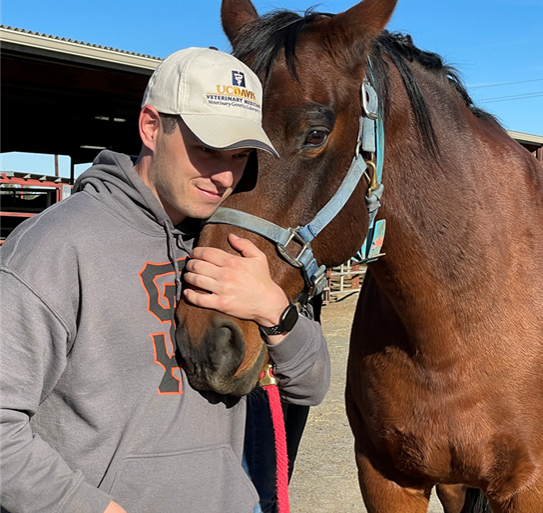 Myles Hammond graduated from UC Davis with a master's in Genetics and Genomics. Myles is originally from Colorado. Before coming to Davis, he earned his bachelor’s degree in Marine Science for the University of Tampa in 2019. He joined the Bellone research group in 2021, and shortly thereafter, he quickly found a passion for horses. His master's research contributed to studies on pigmentation.
Myles Hammond graduated from UC Davis with a master's in Genetics and Genomics. Myles is originally from Colorado. Before coming to Davis, he earned his bachelor’s degree in Marine Science for the University of Tampa in 2019. He joined the Bellone research group in 2021, and shortly thereafter, he quickly found a passion for horses. His master's research contributed to studies on pigmentation.
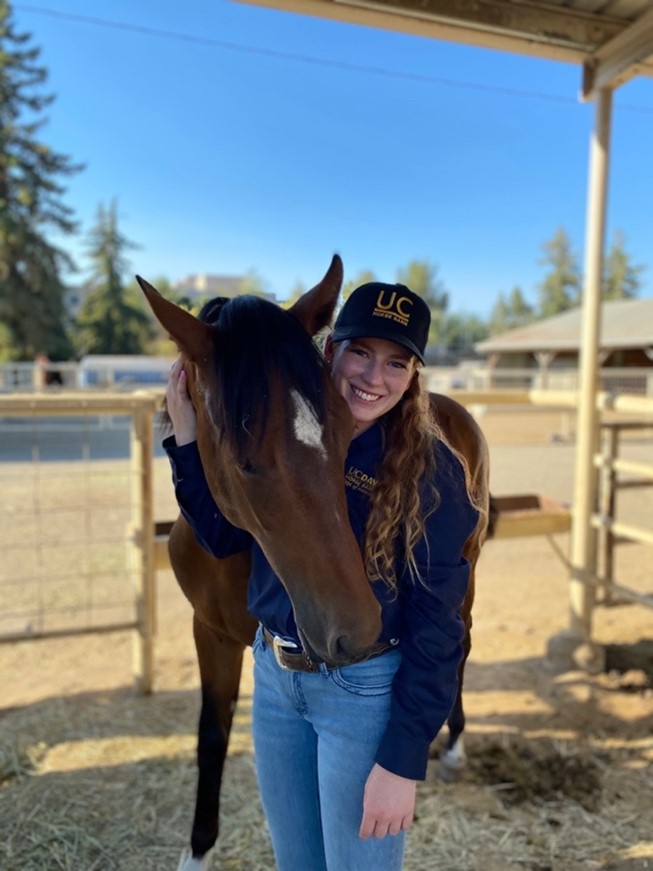
Hannah Echt joined the Bellone research group as a junior after taking Dr. Bellone's equine genetic course. Hannah studied genetic modifiers contributing to Leopard Complex Spotting in Appaloosas. She completed her degree in Animal Science with an equine emphasis in 2022.
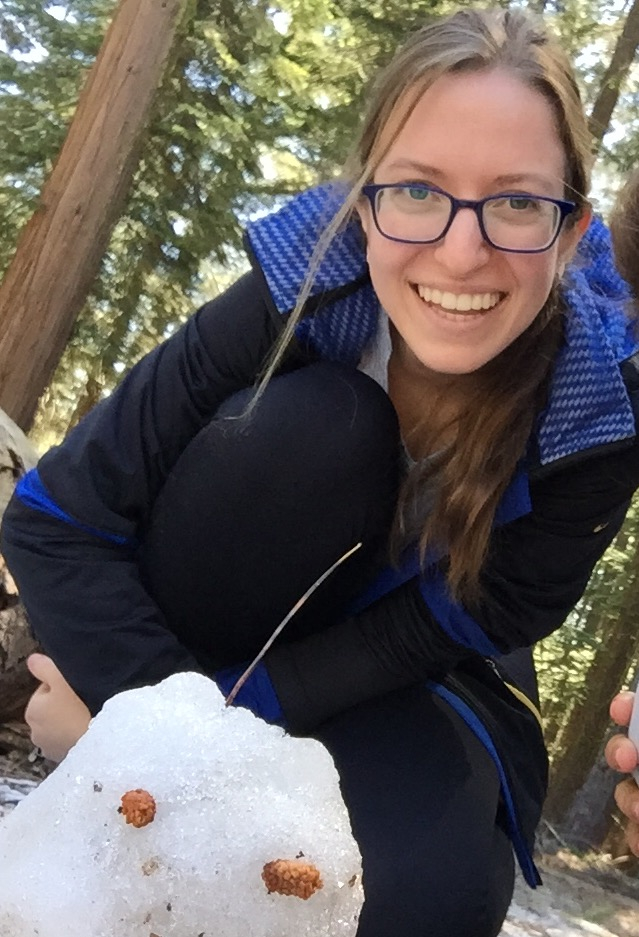
Izzie Hack began interning in the laboratory as an Animal Biology undergraduate student at UC Davis. As part of her honors thesis, she began working on the genetics of ocular disease. Izzie’s work contributed to the discovery of the causal variant for night blindness in the Tennessee Walking Horse, which she is the first author of the scientific paper that details those findings (Hack et al., 2020). Additionally, Izzie investigated genetic risk factors for insidious uveitis in the Icelandic horse (Hack et al., 2022). She is now a third year veterinary student at UC Davis.
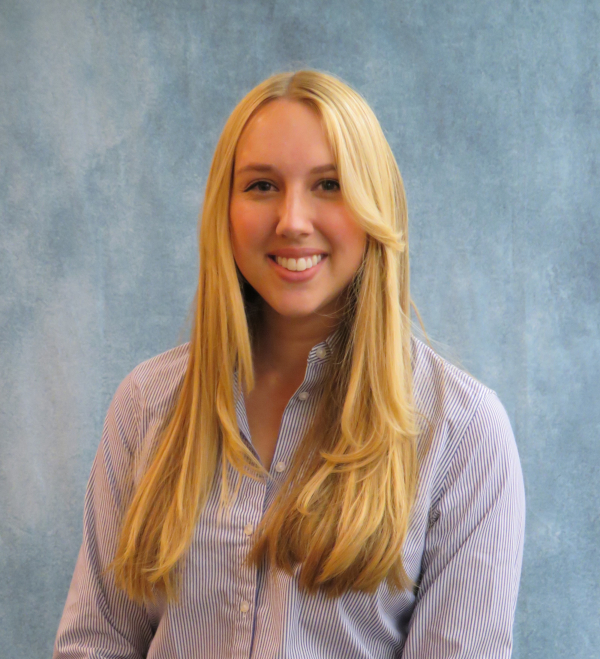 Dr. Alexandra Grillos received her undergraduate degree from Cal Poly San Luis Obispo and completed her DVM at UC Davis in 2023. She joined the Bellone research group as part of the STAR program. Her work investigated the genetics of early pregnancy loss in Thoroughbreds as a collaboration between the Veterinary Genetics Laboratory and the Royal Veterinary College in London, UK. She also contributed to the discovery of the first fragile foal case in the Thoroughbred (Grillos et al., 2021). She is currently a resident of Theriogenology and Reproductive Medicine at The Ohio State University.
Dr. Alexandra Grillos received her undergraduate degree from Cal Poly San Luis Obispo and completed her DVM at UC Davis in 2023. She joined the Bellone research group as part of the STAR program. Her work investigated the genetics of early pregnancy loss in Thoroughbreds as a collaboration between the Veterinary Genetics Laboratory and the Royal Veterinary College in London, UK. She also contributed to the discovery of the first fragile foal case in the Thoroughbred (Grillos et al., 2021). She is currently a resident of Theriogenology and Reproductive Medicine at The Ohio State University.
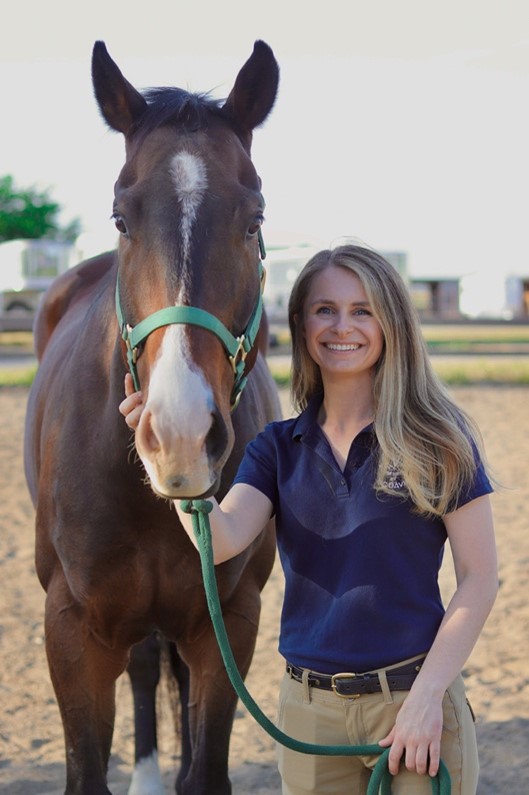 Megan Elcombe is working towards her veterinary degree at the UC Davis School of Veterinary Medicine. Megan participated in the Students Training in Advanced Research (STAR) Program in 2021. She worked on a joint project between the Bellone and Finno laboratories to investigate the frequency of the genetic variant associated with Equine Familial Isolated Hypoparathyroidism (EFIH) in Thoroughbred Horses. She is also a recent recipient of the Ann T Bowling scholarship, awarded to outstanding veterinary students who have contributed to equine genetics. Her current interests are specifically in Thoroughbreds and Racetrack Medicine.
Megan Elcombe is working towards her veterinary degree at the UC Davis School of Veterinary Medicine. Megan participated in the Students Training in Advanced Research (STAR) Program in 2021. She worked on a joint project between the Bellone and Finno laboratories to investigate the frequency of the genetic variant associated with Equine Familial Isolated Hypoparathyroidism (EFIH) in Thoroughbred Horses. She is also a recent recipient of the Ann T Bowling scholarship, awarded to outstanding veterinary students who have contributed to equine genetics. Her current interests are specifically in Thoroughbreds and Racetrack Medicine.
 Dr. Kelly Knickelbein obtained her veterinary degree from the University of Pennsylvania School of Veterinary Medicine in 2015. She then completed a one-year rotating internship in equine medicine and surgery followed by a one-year internship in comparative ophthalmology. Dr. Knickelbein completed her veterinary ophthalmology residency at UC Davis in 2021 under the mentorship of Drs. Mary Lassaline and Bellone. She is a Diplomate of the American College of Veterinary Ophthalmologists. During her residency, she contributed to projects investigating the genetics of ocular squamous cell carcinoma in multiple breeds of horses (Knickelbein et al., 2019) and corneal disease in Friesian horses. Currently she is an assistant professor at Cornell University and continues to collaborate on many ocular projects with the VGL equine research group.
Dr. Kelly Knickelbein obtained her veterinary degree from the University of Pennsylvania School of Veterinary Medicine in 2015. She then completed a one-year rotating internship in equine medicine and surgery followed by a one-year internship in comparative ophthalmology. Dr. Knickelbein completed her veterinary ophthalmology residency at UC Davis in 2021 under the mentorship of Drs. Mary Lassaline and Bellone. She is a Diplomate of the American College of Veterinary Ophthalmologists. During her residency, she contributed to projects investigating the genetics of ocular squamous cell carcinoma in multiple breeds of horses (Knickelbein et al., 2019) and corneal disease in Friesian horses. Currently she is an assistant professor at Cornell University and continues to collaborate on many ocular projects with the VGL equine research group.
 Jocelyn Tanaka completed a master's in Animal Biology at UC Davis in December 2019. As part of her thesis, she identified the genetic cause for the mushroom dilution in Shetland ponies and studied the genetic mechanisms of several other pigmentation traits in horses and donkeys. After completing her master's, she became a research technician at the Veterinary Genetics Laboratory, assisting in the test development and research section until moving into human genetics. Jocelyn is currently a senior research associate at Color Health, Inc.
Jocelyn Tanaka completed a master's in Animal Biology at UC Davis in December 2019. As part of her thesis, she identified the genetic cause for the mushroom dilution in Shetland ponies and studied the genetic mechanisms of several other pigmentation traits in horses and donkeys. After completing her master's, she became a research technician at the Veterinary Genetics Laboratory, assisting in the test development and research section until moving into human genetics. Jocelyn is currently a senior research associate at Color Health, Inc.
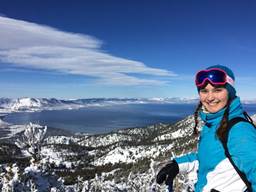 Erin Hisey is currently enrolled as a dual degree DVM/PhD student at UC Davis. She began working in the equine research section as a second-year Animal Science undergraduate student during which she investigated the genetic mechanisms for distichiasis in Friesian horses, leading to the discovery of a 16kb deletion that is associated with the disease (Hisey et al., 2020).
Erin Hisey is currently enrolled as a dual degree DVM/PhD student at UC Davis. She began working in the equine research section as a second-year Animal Science undergraduate student during which she investigated the genetic mechanisms for distichiasis in Friesian horses, leading to the discovery of a 16kb deletion that is associated with the disease (Hisey et al., 2020).
Juliana Mun joined the lab as a UC Davis undergraduate student and worked on coat color projects. She now works as a Clinical Laboratory Assistance at the University of Southern California.
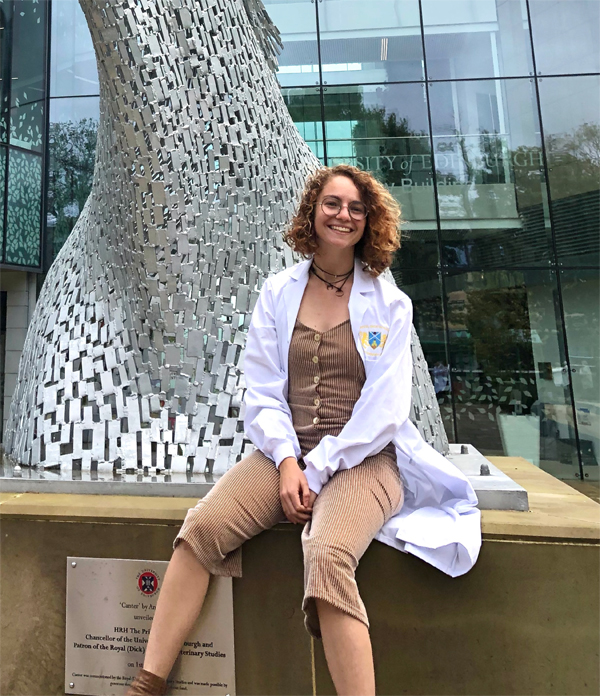 Dr. Margo Crausaz joined the laboratory during the end of her last year as a UC Davis undergraduate and stayed on for the following year prior to moving to Scotland to earn her BVM&S at the Royal (Dick) School of Veterinary Studies. Her work contributed to data collection and analysis of the genetics of squamous cell carcinoma in multiple breeds of horses (Crausaz et al., 2020).
Dr. Margo Crausaz joined the laboratory during the end of her last year as a UC Davis undergraduate and stayed on for the following year prior to moving to Scotland to earn her BVM&S at the Royal (Dick) School of Veterinary Studies. Her work contributed to data collection and analysis of the genetics of squamous cell carcinoma in multiple breeds of horses (Crausaz et al., 2020).
 Dr. Helena Rockwell joined the laboratory as a fourth-year Animal Science undergraduate with a passion for both horses and human medicine. She has been involved in several projects contributing as the first author to data collection and analysis for Equine Recurrent Uveitis in the Appaloosa (Rockwell et al., 2020). Helena has since earned her MD from the University of California, San Diego.
Dr. Helena Rockwell joined the laboratory as a fourth-year Animal Science undergraduate with a passion for both horses and human medicine. She has been involved in several projects contributing as the first author to data collection and analysis for Equine Recurrent Uveitis in the Appaloosa (Rockwell et al., 2020). Helena has since earned her MD from the University of California, San Diego.
 Moriel Singer-Berk completed a master's in Animal Biology at UC Davis in December 2018. As part of her thesis, she investigated risk factors for squamous cell carcinoma in multiple horse breeds (Singer-Berk et al., 2019). She is currently a clinical genomic variant curator at the Broad Institute.
Moriel Singer-Berk completed a master's in Animal Biology at UC Davis in December 2018. As part of her thesis, she investigated risk factors for squamous cell carcinoma in multiple horse breeds (Singer-Berk et al., 2019). She is currently a clinical genomic variant curator at the Broad Institute.
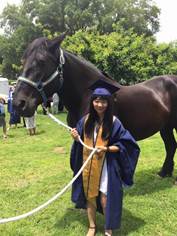 Dr. Jiayin Liu joined the Bellone laboratory during her junior year as an Animal Science undergraduate intern. Her work contributed to the discovery of the risk variant for ocular SCC in Haflinger horses (Bellone et al. 2017). After earning her bachelor's degree, she completed her veterinary degree at The Ohio State University and is a small animal veterinarian, with a focus in emergency medicine.
Dr. Jiayin Liu joined the Bellone laboratory during her junior year as an Animal Science undergraduate intern. Her work contributed to the discovery of the risk variant for ocular SCC in Haflinger horses (Bellone et al. 2017). After earning her bachelor's degree, she completed her veterinary degree at The Ohio State University and is a small animal veterinarian, with a focus in emergency medicine.
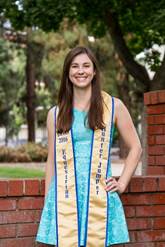 Dr. Maura Mack joined the laboratory as a UC Davis Animal Science undergraduate intern during her last year of college and stayed on for a year as a research associate before heading to veterinary school. Maura was heavily involved in several of the projects in the Bellone laboratory. Her work identified the two mutations associated with the tiger eye phenotype in Puerto Rican Paso Fino horses (Mack et al., 2017) and contributed to studies on equine recurrent uveitis in the Appaloosa. After leaving UC Davis, she went on to earn her veterinary degree from Colorado State University and is now a practicing equine veterinarian.
Dr. Maura Mack joined the laboratory as a UC Davis Animal Science undergraduate intern during her last year of college and stayed on for a year as a research associate before heading to veterinary school. Maura was heavily involved in several of the projects in the Bellone laboratory. Her work identified the two mutations associated with the tiger eye phenotype in Puerto Rican Paso Fino horses (Mack et al., 2017) and contributed to studies on equine recurrent uveitis in the Appaloosa. After leaving UC Davis, she went on to earn her veterinary degree from Colorado State University and is now a practicing equine veterinarian.
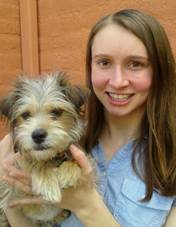 Dr. Savanna Vig completed her veterinary degree at UC Davis in 2017. She joined the laboratory after her second year at Davis as a STAR (Students Training in Advanced Research) summer fellow. During her summer fellowship, Savanna investigated a genetic risk factor for ocular SCC in multiple horse breeds (Singer-Berk et al., 2019). Dr. Vig has since completed a residency in ophthalmology at Animal Eye Specialists and is now a board certified veterinary ophthalmologist.
Dr. Savanna Vig completed her veterinary degree at UC Davis in 2017. She joined the laboratory after her second year at Davis as a STAR (Students Training in Advanced Research) summer fellow. During her summer fellowship, Savanna investigated a genetic risk factor for ocular SCC in multiple horse breeds (Singer-Berk et al., 2019). Dr. Vig has since completed a residency in ophthalmology at Animal Eye Specialists and is now a board certified veterinary ophthalmologist.
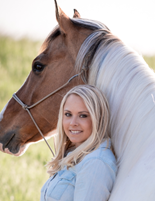 Dr. Coral White (née Alberi) earned her veterinary degree from the UC Davis School of Veterinary Medicine and is now an equine veterinarian. During her undergraduate career as an Animal Science major, also at UC Davis, she interned in the Bellone laboratory and investigated a candidate gene for Bilateral Corneal Stroma Loss in Friesian horses (Alberi et al., 2018).
Dr. Coral White (née Alberi) earned her veterinary degree from the UC Davis School of Veterinary Medicine and is now an equine veterinarian. During her undergraduate career as an Animal Science major, also at UC Davis, she interned in the Bellone laboratory and investigated a candidate gene for Bilateral Corneal Stroma Loss in Friesian horses (Alberi et al., 2018).
 Dr. Alyssa Atilano joined the lab as an undergraduate student where she performed pedigree analysis for several ocular disorders in horses, such as in families of Friesian Horses with bilateral corneal stromal loss (BCSL) (Alberi et al., 2018). She has since earned her DVM from UC Davis and is now an equine veterinarian.
Dr. Alyssa Atilano joined the lab as an undergraduate student where she performed pedigree analysis for several ocular disorders in horses, such as in families of Friesian Horses with bilateral corneal stromal loss (BCSL) (Alberi et al., 2018). She has since earned her DVM from UC Davis and is now an equine veterinarian.
PUBLICATIONS
View Publications
Cappelletti, E., Piras, F. M., Biundo, M., Bellone, R. R., Finno, C. J., Kalbfleisch, T. S., Petersen, J. L., Nergadze, S. G., & Giulotto, E. (2025). CENP-A and centromere evolution in equids. Chromosome research : an international journal on the molecular, supramolecular and evolutionary aspects of chromosome biology, 33(1), 13. doi: 10.1007/s10577-025-09773-3
Avila, F., Esdaile, E., & Bellone, R. R. (2025). Using STR Data to Investigate the Impact of the Studbook Cap on Genetic Diversity in the American Standardbred Horse from 1998 to 2021. Genes, 16(7), 748. doi: 10.3390/genes16070748
Aleman, M., McCue, M., & Bellone, R. R. (2025). Allele Frequencies and Genotypes for the Ryanodine Receptor 1 Variant Causing Malignant Hyperthermia and Fatal Rhabdomyolysis With Hyperthermia in Horses. Journal of veterinary internal medicine, 39(3), e70081. doi: 10.1111/jvim.70081
Finno, C. J., Rogers, S. L., Donnelly, C. G., Affolter, V. K., Woolard, K., Miller, A. D., Bellone, R. R., & Petersen, J. L. (2025). Spatial transcriptomics defines the cell-specific RNA landscape of equine dorsal root ganglia. Veterinary pathology, 3009858241312623. Advance online publication. doi: 10.1177/03009858241312623
Barber, A. M., Kingsley, N. B., Peng, S., Giulotto, E., Bellone, R. R., Finno, C. J., Kalbfleisch, T., & Petersen, J. L. (2025). Annotation of cis-regulatory-associated histone modifications in the genomes of two Thoroughbred stallions. Frontiers in genetics, 16, 1534461. doi: 10.3389/fgene.2025.1534461
Stefaniuk-Szmukier, M., Bieniek, A., Ropka-Molik, R., Bellone, R.R. (2025). Genetic testing as a tool for diagnosis of congenital stationary night blindness (CSNB) in white spotted breeds in Poland. Journal of Equine Veterinary Science 147, 105405. doi: 10.1016/j.jevs.2025.105405
Heath, H.D., Peng, S., Szmatola, T., Ryan, S., Bellone, R.R., Kalbfleisch, T., Petersen, J.L., Finno, C.J. (2025). A comprehensive allele specific expression resource for the equine transcriptome. BMC Genomics 26, 88. doi: 10.1186/s12864-025-11240-6
Rubin, C. J., Hodge, M., Naboulsi, R., Beckman, M., Bellone, R. R., Kallenberg, A., J'Usrey, S., Ohmura, H., Seki, K., Furukawa, R., Ohnuma, A., Davis, B. W., Tozaki, T., Lindgren, G., & Andersson, L. (2024). An intronic copy number variation in Syntaxin 17 determines speed of greying and melanoma incidence in Grey horses. Nature communications, 15(1), 7510. doi: 10.1038/s41467-024-51898-2
Lawson, J. M., Salem, S. E., Miller, D., Kahler, A., van den Boer, W. J., Shilton, C. A., Sever, T., Mouncey, R. R., Ward, J., Hampshire, D. J., Foote, A. K., Bryan, J. S., Juras, R., Pynn, O. D., Davis, B. W., Bellone, R. R., Raudsepp, T., & de Mestre, A. M. (2024). Naturally occurring horse model of miscarriage reveals temporal relationship between chromosomal aberration type and point of lethality. Proceedings of the National Academy of Sciences of the United States of America, 121(33), e2405636121. doi: 10.1073/pnas.2405636121
Plotsker, N.M., Bellone, R.R., Ledbetter, E.C., Irby, N.L., Good, K.L., Knickelbein, K.E. (2024) Breed predispositions to congenital and juvenile cataracts in horses at two academic institutions. Equine Vet J. Sep;56(5):1041-1049. doi: 10.1111/evj.14034. Epub 2023 Dec 14.
Durward-Akhurst, S.A., Marlowe, J.L., Schaefer, R.J., Springer, K., Grantham, B., Carey, W.K., Bellone, R. R., Mickelson, J.R., McCue, M.E. (2024) Predicted genetic burden and frequency of phenotype-associated variants in the horse. Sci Rep 14, 8396. doi: 10.1038/s41598-024-57872-8
Martabano, B.B., Dow, S., Chow, L., Williams, M.M.V., Mack, M.K., Bellone, R., Wotman, K.L. (2024). Intralesional interferon alpha-2b as a novel treatment for periocular squamous cell carcinoma in horses. PLoS One,19(2):e0297366. doi: 10.1371/journal.pone.0297366
Esdaile, E., Knickelbein, K. E., Donnelly, C. G., Ferneding, M., Motta, M. J., Story, B. D., Avila, F., Finno, C. J., Gilger, B. C., Sandmeyer, L., Thomasy, S., & Bellone, R. R. (2023). Additional evidence supports GRM6 p.Thr178Met as a cause of congenital stationary night blindness in three horse breeds. Veterinary ophthalmology, 10.1111/vop.13151. Advance online publication. doi: 10.1111/vop.13151
Cappelletti, E., Piras, F. M., Sola, L., Santagostino, M., Petersen, J. L., Bellone, R. R., Finno, C. J., Peng, S., Kalbfleisch, T. S., Bailey, E., Nergadze, S. G., & Giulotto, E. (2023). The localization of centromere protein A is conserved among tissues. Communications biology, 6(1), 963. doi: 10.1038/s42003-023-05335-7
Bellone, R. R., Tanaka, J., Esdaile, E., Sutton, R.B., Payette, F., Leduc, L., Till, B.J., Abdel-Ghaffar, A.K., Hammond, M., Magdesian, K.G. (2023). A de novo 2.3 kb structural variant in MITF explains a novel splashed white phenotype in a Thoroughbred family. Animal Genetics, 54, 752–762. doi: 10.1111/age.13352
Hammack, S., Hague, D. W., Vieson, M. D., Esdaile, E., Hughes, S. S., Bellone, R. R., & McCoy, A. M. (2023). Novel genetic variant associated with globoid cell leukodystrophy in a family of mixed breed dogs. Journal of veterinary internal medicine, 10.1111/jvim.16822. Advance online publication. doi: 10.1111/jvim.16822
McCue, P. M., Matthews, P. M., Prell, M. J., Bellone, R. R., & Allen, H. (2023). Delayed embryonic development or a long sperm survival in two mares-A registration conundrum. Equine veterinary journal, 56(1), 131-136. doi: 10.1111/evj.13936
Peng, S., Dahlgren, A. R., Donnelly, C. G., Hales, E. N., Petersen, J. L., Bellone, R. R., Kalbfleisch, T., & Finno, C. J. (2023). Functional annotation of the animal genomes: An integrated annotation resource for the horse. PLoS genetics, 19(3), e1010468. Advance online publication. doi: 10.1371/journal.pgen.1010468
Elcombe, M. E., Bellone, R. R., Magdesian, K. G., & Finno, C. J. (2023). Prevalence of the RAPGEF5 c.2624C>A and PLOD1 c.2032G>A variants associated with equine familial isolated hypoparathyroidism and Fragile Foal Syndrome in the US Thoroughbred population (1988-2019). Equine Veterinary Journal, 55(4), 666–671. doi: 10.1111/evj.13883
Sandmeyer, L.S., Bellone, R. R. (2022). Inherited Ocular Disorders. In B.C. Gilger (Ed.), Equine Ophthalmology (4th ed., pp. 661-690). Wiley Blackwell.
Kingsley, N. B., Sandmeyer, L., Parker, S. E., Dwyer, A., Heden, S., Reilly, C., Hallendar-Edman, A., Archer, S., & Bellone, R. R. (2022). Risk factors for insidious uveitis in the Knabstrupper breed. Equine Veterinary Journal, 55(5), 820–830. Advance online publication. doi: 10.1111/evj.13879
Kingsley, N. B., Sandmeyer, L., Norton, E. M., Speed, D., Dwyer, A., Lassaline, M., McCue, M., & Bellone, R. R. (2022). Heritability of insidious uveitis in Appaloosa horses. Animal Genetics, e13267. doi: 10.1111/age.13267
Aleman, M., Scalco, R., Malvick, J., Grahn, R. A., True, A., & Bellone, R. R. (2022). Prevalence of genetic mutations in horses with muscle disease from a neuromuscular disease laboratory. Journal of Equine Veterinary Science, 104129. doi: 10.1016/j.jevs.2022.104129
Avila, F., Hughes, S. S., Magdesian, K. G., Penedo, M. C. T, & Bellone, R. R. (2022). Breed Distribution and Allele Frequencies of Base Coat Color, Dilution, and White Patterning Variants across 28 Horse Breeds. Genes, 13(9),1641. doi: 10.1016/j.rvsc.2021.02.024
Kingsley, N. B., Sandmeyer, L., & Bellone, R. R. (2022). A review of investigated risk factors for developing equine recurrent uveitis. Veterinary Ophthalmology, 10.1111/vop.13002. Advance online publication. doi: 10.1111/vop.13002
Bacon, E. K., Donnelly, C. G., Bellone, R. R., Finno, C. J., & Velie, B. D. (2022). Melanocortin‐1 receptor influence in equine opioid sensitivity. Equine Veterinary Education. doi: 10.1111/eve.13661
Esdaile, E., Till, B., Kallenberg, A., Fremeux, M., Bickel, L., & Bellone, R. R. (2022). A de novo missense mutation in KIT is responsible for dominant white spotting phenotype in a Standardbred horse. Animal Genetics, 10.1111/age.13222. Advance online publication. doi: 10.1111/age.13222
Gurgul, A., Szmatoła, T., Ocłoń, E., Jasielczuk, I., Semik-Gurgul, E., Finno, C. J., Petersen, J. L., Bellone, R., Hales, E. N., Ząbek, T., Arent, Z., Kotula-Balak, M., & Bugno-Poniewierska, M. (2022). Another lesson from unmapped reads: in-depth analysis of RNA-Seq reads from various horse tissues. Journal of Applied Genetics, 10.1007/s13353-022-00705-z. Advance online publication. doi: 10.1007/s13353-022-00705-z
Hack, Y., Henriksen, M. D. L., Pihl, T. H., Nielsen, R. K., Dwyer, A. E. & Bellone, R. R. (2022) A genetic investigation of equine recurrent uveitis in the Icelandic horse breed. Animal Genetics. doi: 10.1038/s41588-022-01026-x
Valberg, S. J., Schultz, A. E., Finno, C. J., Bellone, R. R., & Hughes, S. S. (2022). Prevalence of clinical signs and factors impacting expression of myosin heavy chain myopathy in Quarter Horse-related breeds with the MYH1E321G mutation. Journal of veterinary internal medicine . Advance online publication. doi: 10.1111/jvim.16417
Wang, Z., Chivu, A. G., Choate, L. A., Rice, E. J., Miller, D. C., Chu, T., Chou, S. P., Kingsley, N. B., Petersen, J. L., Finno, C. J., Bellone, R. R., Antczak, D. F., Lis, J. T., & Danko, C. G. (2022). Prediction of histone post-translational modification patterns based on nascent transcription data. Nature genetics, 54(3), 295–305. doi: 10.1038/s41588-022-01026-x
Horvath, S., Haghani, A., Peng, S., Hales, E. N., Zoller, J. A., Raj, K., Larison, B., Robeck, T. R., Petersen, J. L., Bellone, R. R. & Finno, C. J. (2022). DNA methylation aging and transcriptomic studies in horses. Nature Communications, 13(1), 1-13. doi: 10.1038/s41467-021-27754-y
Esdaile, E., Avila, F., & Bellone, R. R. (2021). Analysis of Genetic Diversity in the American Standardbred Horse Utilizing Short Tandem Repeats and Single Nucleotide Polymorphisms. Journal of Heredity. doi: 10.1093/jhered/esab070
Grillos, A. S., Roach, J. M., de Mestre, A. M., Foote, A. K., Kinglsey, N. B., Mienaltowski, M. J., & Bellone, R. R. (2021). First reported case of fragile foal syndrome type 1 in the Thoroughbred caused by PLOD1 c.2032G>A. Equine veterinary journal Advance online publication. doi: 10.1111/evj.13547
Esdaile, E., Kallenberg, A., Avila, F., & Bellone, R. R. (2021). Identification of W13 in the American Miniature Horse and Shetland Pony Populations. Genes, 12(12), 1985. doi: 10.3390/genes12121985
Peng, S., Bellone, R., Petersen, J. L., Kalbfleisch, T. S., & Finno, C. J. (2021). Successful ATAC-Seq From Snap-Frozen Equine Tissues. Frontiers in genetics, 12, 641788. doi: 10.3389/fgene.2021.641788
Donnelly, C.G., Bellone, R.R., Hales, E.N., Nguyen, A., Katzman, S.A., Dujovne, G.A., Knickelbein, K.E., Avila, F., Kalbfleisch, T.S., Giulotto, E., Kingsley, N.B., Tanaka, J., Esdaile, E., Peng, S., Dahlgren, A., Fuller, A., Mienaltowski, M.J., Raudsepp, T., Affolter, V.K., Petersen, J.L., Finno, C.J. (2021). Generation of a Biobank From Two Adult Thoroughbred Stallions for the Functional Annotation of Animal Genomes Initiative. Frontiers in Genetics, 12, 301. doi: 10.3389/fgene.2021.650305
Kingsley, N.B., Hamilton, N.A., Lindgren, G., Orlando, L., Bailey, E., Brooks, S., McCue, M., Kalbfleisch, T. S., MacLeod, J.N., Petersen, J.L., Finno, C.J., Bellone, R.R. (2021). “Adopt-a-Tissue” Initiative Advances Efforts to Identify Tissue-Specific Histone Marks in the Mare. Frontiers in Genetics, 12, 390. doi: 10.3389/fgene.2021.649959
Aleman, M., Crowe, C., Dechant, J., Bellone, R.R., & Avila, F. (2021). Brainstem auditory evoked responses and bone conduction assessment in alpacas. Research in Veterinary Science, 136, 297-302. doi: 10.1016/j.rvsc.2021.02.024
Chen, L., Bellone, R.R., Wang, Y., Singer-Berk, M., Sugasawa, K., Ford, J.M., & Artandi, S.E. (2021). A novel DDB2 mutation causes defective recognition of UV-induced DNA damages and prevalent equine squamous cell carcinoma. DNA Repair, 97, 103022. doi: 10.1016/j.dnarep.2020.103022
Mendoza, M.N., Schalnus, S.A., Thomson, B., Bellone, R.R., Juras, R., & Raudsepp, T. (2020). Novel complex unbalanced dicentric X-autosome rearrangement in a Thoroughbred mare with a mild effect on the phenotype. Cytogenetic and Genome Research, 160(10), 597-609. doi: 10.1159/000511236
Reiter, S., Wallner, B., Brem, G., Haring, E., Hoelzle, L., Stefaniuk-Szmukier, M., Długosz, B., Piórkowska, K., Ropka-Molik, K., Malvick, J., Penedo, M.C.T., Bellone, R.R. (2020). Distribution of the Warmblood Fragile Foal Syndrome Type 1 Mutation (PLOD1 c.2032G>A) in Different Horse Breeds from Europe and the United States. Genes, 11(12), 1518. doi: 10.3390/genes11121518
Crausaz, M., Launois, T., Smith-Fleming, K., McCoy, A.M., Knickelbein, K.E., & Bellone, R.R. (2020). DDB2 Genetic Risk Factor for Ocular Squamous Cell Carcinoma Identified in Three Additional Horse Breeds. Genes, 11(12), 1460. doi: 10.3390/genes11121460
Hisey, E.A., Hermans, H., Lounsberry, Z.T., Avila, F., Grahn, R.A., Knickelbein, K.E., Duward-Akhurst, S.A., McCue, M.E., Kalbfleisch, T., Lassaline, M.E., Back, W., & Bellone, R.R. (2020). Whole genome sequencing identified a 16 kilobase deletion on ECA13 associated with distichiasis in Friesian horses. BMC Genomics, 21, 848. doi: 10.1186/s12864-020-07265-8
Bellone R. R. (2020). Genetics of Equine Ocular Disease. The Veterinary Clinics of North America. Equine Practice, 36(2), 303-322. doi: 10.1016/j.cveq.2020.03.009
Tanaka, J., Grahn, R., & Bellone, R. R. (2020). Evidence supports white spotting in donkeys as a homozygous lethal condition. Animal Genetics, 51(5), 840-842. doi: 10.1111/age.12983
Hack, Y.L., Crabtree, E.E., Avila, F., Sutton, R.B., Grahn, R., Oh, A., Gilger, B., & Bellone, R.R. (2020). Whole‐genome sequencing identifies missense mutation in GRM6 as the likely cause of congenital stationary night blindness in a Tennessee Walking Horse. Equine Veterinary Journal. Advance online publication. doi: 10.1111/evj.13318
Dahlgren, A.R., Scott, E.Y., Mansour, T., Hales, E.N., Ross, P.J., Kalbfleisch, T.S., MacLeod, J.N., Petersen, J.L., Bellone, R.R., & Finno, C.J. (2020). Comparison of Poly-A+ Selection and rRNA Depletion in Detection of lncRNA in Two Equine Tissues Using RNA-seq. Non-Coding RNA, 6(3), 32. doi: 10.3390/ncrna6030032
Bellone, R.R. & Avila, F. (2020). Genetic Testing in the Horse. Veterinary Clinics: Equine Practice, 36(2), 211-234. doi: 10.1016/j.cveq.2020.03.003
Sandmeyer, L. S., Kingsley, N. B., Walder, C., Archer, S., Leis, M. L., Bellone, R. R., & Bauer, B. S. (2020). Risk factors for equine recurrent uveitis in a population of Appaloosa horses in western Canada. Veterinary Ophthalmology, 23(3), 515-525. doi: 10.1111/vop.12749
Magdesian, K.G., Tanaka, J., & Bellone, R.R. (2020). A De Novo MITF Deletion Explains a Novel Splashed White Phenotype in an American Paint Horse. Journal of Heredity, 111(3), 287-293. doi: 10.1093/jhered/esaa009
Rockwell, H., Mack, M., Famula, T., Sandmeyer, L., Bauer, B., Dwyer, A., Lassaline, M., Beeson, S., Archer, S., McCue, M., & Bellone, R.R. (2020). Genetic investigation of equine recurrent uveitis in Appaloosa horses. Animal Genetics, 51(1), 111-116. doi: 10.1111/age.12883
Kingsley, N.B., Kern, C., Creppe, C., Hales, E.N., Zhou, H., Kalbfleisch, T.S., MacLeod, J.N., Petersen, J.L., Finno, C.J., & Bellone, R.R. (2020). Functionally Annotating Regulatory Elements in the Equine Genome Using Histone Mark ChIP-Seq. Genes, 11(1), 3. doi: 10.3390/genes11010003
Saldinger, L.K., Nelson, S.G., Bellone, R.R., Lassaline, M., Mack, M., Walker, N.J., & Borjesson, D.L. (2019). Horses with equine recurrent uveitis have an activated CD4+ T‐cell phenotype that can be modulated by mesenchymal stem cells in vitro. Veterinary Ophthalmology, 2019; 00: 1-11. https://doi.org/10.1111/vop.12704
Raudsepp, T., Finno, C.J., Bellone, R.R. & Petersen, J.L. (2019). Ten years of the horse reference genome: insights into equine biology, domestication and population dynamics in the post‐genome era. Animal Genetics, 50(2), 569-597. doi: 10.1111/age.12857
Tanaka, J., Leeb, T., Rushton, J., Famula, T.R., Mack, M., Jagannathan, V., Flury, C., Bachmann, I., Eberth, J., McDonnell, S.M., Penedo, M.C.T., & Bellone, R.R. (2019). Frameshift Variant in MFSD12 Explains the Mushroom Coat Color Dilution in Shetland Ponies. Genes, 10, 826. doi: 10.3390/genes10100826
Singer-Berk, M., Knickelbein, K.E., Lounsberry, Z.T., Crausaz, M., Vig, S., Joshi, N., Britton, M., Settles, M.L., Reilly, C.N., Bentley, E., Nunnery, C., Dwyer, A., Lassaline, M.E. & Bellone, R.R. (2019). Additional Evidence for DDB2 T338M as a genetic risk factor for ocular squamous cell carcinoma in horses. International Journal of Genomics, Vol. 2019, Article ID 3610965, 10 pages. doi: 10.1155/2019/3610965.
Bellone, R.R., Ocampo, N.R., Hughes, S.S., Le, V., Arthur, R., Finno, C.J. & Penedo, M.C.T. (2019). Warmblood fragile foal syndrome type 1 mutation (PLOD1 c.2032G>A) is not associated with catastrophic breakdown and has a low allele frequency in the Thoroughbred breed. Equine Veterinary Journal, 52, 411-414. doi: 10.1111/evj.13182
Knickelbein, K.E., Lassaline, M.E., Singer-Berk, M., Reilly, C.M., Clode, A.B., Famula, T.R., Michau T.M., & Bellone, R.R. (2019). A missense mutation in damage-specific DNA binding protein 2 is a genetic risk factor for ocular squamous cell carcinoma in Belgian horses. Equine Veterinary Journal, 52(1), 34-40. doi: 10.1111/evj.13116
Knickelbein, K.E., Lassaline, M., Bellone, R.R. (2019). Limbal squamous cell carcinoma in a Rocky Mountain Horse: Case report and investigation of genetic contribution. Veterinary Ophthalmology, 22(2), 201-205. doi: 10.1111/vop.12612
Cranford, T.L., Velazquez, K.T., Enos, R.T., Sougiannis, A.T., Bader, J.E., Carsons, M.S., Bellone, R.R., Charzistamou, I., Nagarkatti, M., Mruphy, E.A. (2019). Effects of high fat diet-induced obesity on mammary tumorigenesis in the PyMT/MMTV murine model. Cancer Biology & Therapy, 20(4), 487-496. doi: 10.1080/15384047.2018.1537574
Kalbfleisch, T.S., Rice, E.S., DePriest, M.S., Jr., Walenz, B.P., Hestand, M.S., Vermeesch, J.R., Connell, B.L., Fiddes, I.T., Vershinina, A.O., Saremi, N.F., Petersen, J.L., Finno, C.J., Bellone, R.R., McCue, M.E., Brooks, S.A., Bailey, E., Orlando, L., Green, R.E., Miller, D.C., Antczak, D.F., & MacLeod, J.N. (2018). Improved reference genome for the domestic horse increases assembly contiguity and composition. Communications Biology 1:197. doi: 10.1038/s42003-018-0199-z
Alberi, C., Hisey, E., Lassaline, M., Atilano, A., Kalbfleisch, T., Stoppini, R., Hermans, H., Back, W., Mienaltowski, M.J., & Bellone, R.R. (2018). Ruling out BGN variants as simple X-linked causative mutations for bilateral corneal stromal loss in Friesian horses. Animal Genetics, 49(6), 656-657. doi: 10.1111/age.12726
Burns, E.N., Bordbari, M., Mienaltowski, M., Affolter, V., Barro, M.V., Gianino, F., Gianino, G., Giulotto, E., Kalbfleisch, T.S., Katzman, S.A., Lassaline, M., Leeb, T., Mack, M., Muller, E.J., MacLeod, J.N., Ming-Whitfield, B., Ramirez Alanis, C., Raudsepp, T., Scott, E., Vig, S., Zhou, H., Petersen, J., Bellone, R.R., & Finno, C.J. (2018). Generation of an equine biobank to be used for Functional Annotation of Animal Genomes project. Animal Genetics, 49(6), 564-570. doi: 10.1111/age.12717
Singer-Berk, M., Knickelbein, K.E., Vig, S., Liu, J., Bentley, E., Nunnery, C., Reilly, C., Dwyer, A., Drögemüller, C Unger, L., Gerber, V., Lassaline, M., & Bellone, R.R. (2018). Genetic risk for squamous cell carcinoma of the nictitating membrane parallels that of the limbus in Haflinger horses. Animal Genetics, 49(5), 457-460. doi: 10.1111/age.12695
Mack, M., Kowalski, E., Grahn, R., Bras, D., Penedo, M. C. T., & Bellone, R. (2017). Two Variants in SLC24A5 Are Associated with “Tiger-Eye” Iris Pigmentation in Puerto Rican Paso Fino Horses. G3: Genes|Genomes|Genetics, 7(8), 2799–2806. doi:10.1534/g3.117.043786
Scott, E. Y., Mansour, T., Bellone, R. R., Brown, C. T., Mienaltowski, M. J., Penedo, M. C., Ross, P.J., Valberg, S.J., Murray, J.D.., & Finno, C. J. (2017). Identification of long non-coding RNA in the horse transcriptome. BMC Genomics, 18, 511. doi:10.1186/s12864-017-3884-2.
Bellone, R. R., Liu, J., Petersen, J. L., Mack, M., Singer-Berk, M., Drögemüller, C., Malvick, J., Wallner, B., Brem, G., Penedo, M. C. & Lassaline, M. (2017). A missense mutation in damage-specific DNA binding protein 2 is a genetic risk factor for limbal squamous cell carcinoma in horses. International Journal of Cancer, 141(2), 342–353. doi:10.1002/ijc.30744.
Mansour, T. A., Scott, E. Y., Finno, C. J., Bellone, R. R., Mienaltowski, M. J., Penedo, M. C., Ross, P.J., Valberg, S.J., Murray, J.D., & Brown, C. T. (2017). Tissue resolved, gene structure refined equine transcriptome. BMC Genomics, 18, 103. doi:10.1186/s12864-016-3451-2.
Tuggle, C. K., Giuffra, E., White, S. N., Clarke, L., Zhou, H., Ross, P. J., Acloque, H., Reecy, J. M., Archibald, A., Bellone, R. R., Boichard, M., Chamberlain, A., Cheng, H., Crooijmans, R. P.M.A., Delany, M. E., Finno, C. J., Groenen, M. A. M., Hayes, B., Lunney, J. K., Petersen, J. L., Plastow, G. S., Schmidt, C. J., Song, J., & Watson, M. (2016). GO-FAANG meeting: a Gathering On Functional Annotation of Animal Genomes. Animal Genetics, 47(5), 528–533. doi:10.1111/age.12466.
Scott, M. L., John, E. E., Bellone, R. R., Ching, J. C. H., Loewen, M. E., Sandmeyer, L. S., Forsyth, G. W. (2016). Redundant contribution of a Transient Receptor Potential cation channel Member 1 exon 11 single nucleotide polymorphism to equine congenital stationary night blindness. BMC Veterinary Research, 12, 121. doi:10.1186/s12917-016-0745-1.
Staiger, E.A., Bellone, R.R., Sutter, N.B., & Brooks, S.A. (2016). Morphological variation in gaited horse breeds. Journal of Equine Veterinary Science, 43, 55-65. doi:10.1016/j.jevs.2016.04.096
Holl, H. M., Brooks, S. A., Archer, S., Brown, K., Malvick, J., Penedo, M. C. T., & Bellone, R. R. (2016). Variant in the RFWD3gene associated with PATN1, a modifier of leopard complex spotting. Animal Genetics, 47(1), 91–101. doi:10.1111/age.12375.
Lassaline, M., Cranford, T.L., Latimer, C.A., & Bellone, R. (2015). Limbal squamous cell carcinoma in Haflinger horses. Veterinary Ophthalmology, 18(5), 404-408 doi:10.1111/vop.12229.
Ludwig, A., Reissmann, M., Benecke, N., Bellone, R., Sandoval-Castellanos, E., Cieslak, M., Fortes, G.G., Morales-Muñiz, A., Hofreiter, M., & Pruvost, M. (2015). 25,000 years fluctuating selection on leopard complex spotting and congenital night blindness in horses. Philosophical Transactions of the Royal Society B: Biological Sciences, 370(1660), 20130386. doi:10.1098/rstb.2013.0386
BOOKS AND BOOK CHAPTERS
View Books
Bellone, R.R. (2017) Chapter 7: Genetic testing as a tool to identify horses with or at risk for ocular disorders. In: Veterinary Clinics of North America: Equine Practice on Equine Ophthalmology Ed: Mary Lassaline Philadelphia, PA Elsevier, Inc, pp 626-645.
Sponenberg, D.P. and Bellone, R.R. (2017). Equine Color Genetics. 4th Edition Ames, IA: Iowa State University Press. ISBN: 978-1-119-13058-1.
Sandmeyer, L. & Bellone, R. (2017). Chapter 13: Inherited Ocular Disorders. In: Equine Ophthalmology, third edition Ed: Brian Gilger Ames, IA: Wiley Blackwell, pp 545-566.
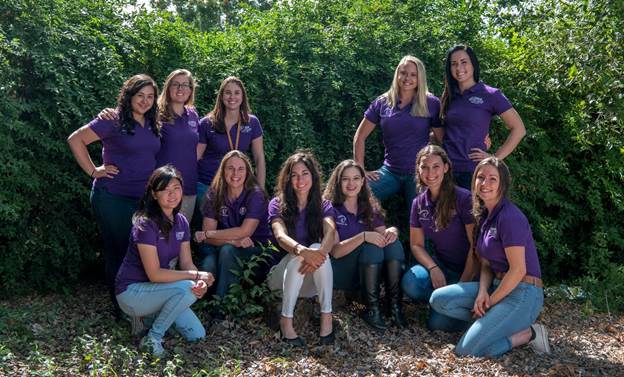
Top banner image courtesy of Katy Robertson

